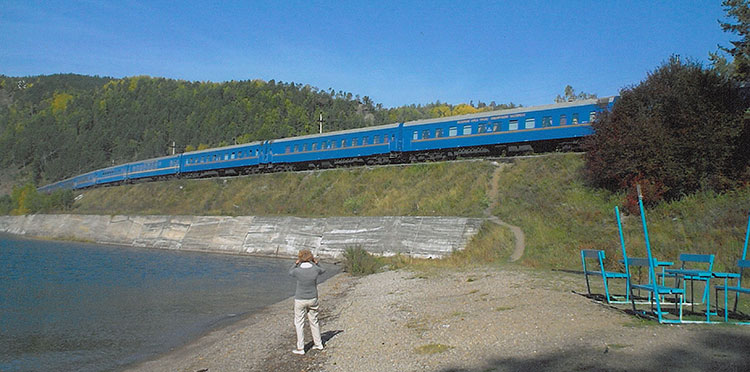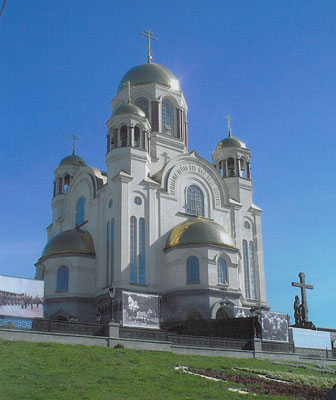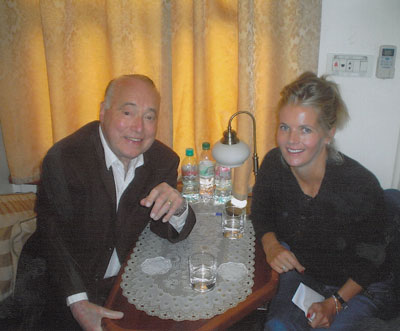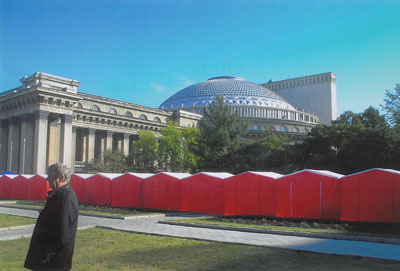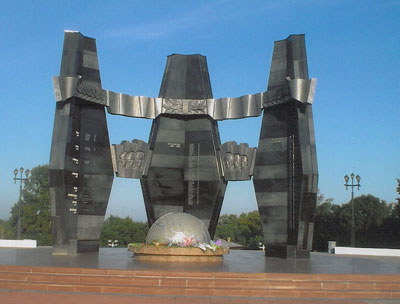The great train journey —Vladivostok to Moscow
This article appears on page 20 of the March 2013 issue.
by Jack Ogg, Houston, TX
In his book “The Big Red Train Ride,” author Eric Newby summed up a Trans-Siberian rail trip when he stated, “There is no railway journey of equal length anywhere in the world. The Trans-Siberian is the big train ride. All the rest are peanuts.”
While Mr. Newby’s statement is bold, it’s true.
The Trans-Siberian Railway crosses Russia from Moscow to Vladivostok, a distance of 5,770 miles. I made the journey aboard the Golden Eagle Trans-Siberian Express, the crème de la crème of the world’s long-distance luxury trains.
The train
My November ’11 trip, arranged by MIR Corporation (Seattle, WA; 800/424-7289), was operated by GW Travel, Ltd., a British specialist in luxury transcontinental rail journeys.
The Golden Eagle travels the Trans-Siberian route between May and September and twice in February and March, the latter journey designed to capture the spectacular Siberian winter — snow-covered trees, picturesque white landscapes and frozen lakes and rivers. It crosses eight time zones in 15 days, including a day traveling through the Mongolian countryside to its capital city, Ulaanbaatar.
The Golden Eagle is akin to a 5-star hotel on wheels, comprising up to 21 cars. Among them are 12 sleeping cars containing four to six en suite cabins per car, with a capacity of 100 guests per trip. There is a separate bar/lounge car and two opulent dining cars (with a separate kitchen car). The passenger cabins are divided into Gold and Silver class cars and one Imperial Suite. While all cabins sleep two in double or bunk-style beds, single occupancy is available.
Each cabin typically has a sofa, an entertainment or work area, a state-of-the-art CD player and an LCD screen. Other appointments include a safe, wardrobe, shower and toilet.
At night, the attendants (two per car) turn the sofa in each cabin into a double bed or upper and lower bunks. The spacing is efficient and compact, with deluxe amenities.
The cost ranges from $14,000 to $27,000 per person, depending on the size of the cabin. Included in the price are all meals with drinks; laundry service; first-class hotel stays; transfers and baggage handling; off-train tours; guides, and gratuities. A British doctor is on board and available 24/7.
The lounge car, furnished with cushy sofas and chairs, hosted the daily cultural, historical and linguistic lectures. The dining car, appointed with china, crystal and silver, offered plentiful cuisine, with primarily European/Russian dishes for lunch and dinner. Service by the staff was brisk and affable, and language was of little barrier.
The daily schedule featured either on-train activities or off-train tours of the city and countryside. The tours were staffed with knowledgeable, multilingual guides and included museum visits, architectural and historical expeditions, musical concerts, market shopping and picnic outings. Among the on-train activities were lectures on wine and food, movies about Russia and its history, daily reviews of the news, Russian language classes and nightly sing-alongs with the resident pianist.
MIR and GW Travel did a superb job of educating their guests and occupying their time for 15 delightful days and nights.
Our group was internationally diverse. While most were seasoned travelers, scarcely any had ever been to Siberia or embarked on an adventure such as this. Among our group members was a BBC camera team, who documented the entire journey, and a freelance Italian filmmaker, who was accompanied by his new bride.
Spry, 80-year-old Margaret Sinclair from Austria made every side trip offered, walking stick and all, and four Aussie “mates” were always the life of the party, usually closing the bar each night.
There was also a group of 17 people from Indonesia, several English and Western European couples and nine Americans, including my old high school chum and best friend, Carl Branch. Finally, we had an unannounced celebrity, Alexandra Tolstoy, a relative of the Great Russian writer Leo Tolstoy.
Vladivostok
We chose the Vladivostok-to-Moscow direction, expecting to go from barren frontier to modern civilization. Did we ever get a shock! Instead of finding bleak cities and desolate countryside, we traveled through energetic urban areas with relatively vibrant economies, and the rural regions were far from the wastelands that I visualized when I heard the word “Siberia.”
Vladivostok, a thriving city, was once closed to foreigners and most Russians because of its strategic military importance. It was opened by Mikhail Gorbachev in the “thawing” era of the Cold War, and its people have never looked back. Situated on Golden Horn Bay, which empties into the Sea of Japan and the Pacific Ocean, it is still the headquarters of Russian Pacific naval operations.
Prior to boarding the Golden Eagle, our group spent the night at the 4-star Hotel Hyundai. While the hotel was well appointed inside, architecturally it lacked a definitive period style.
Our first night’s dinner, at the Versailles restaurant, was composed of borscht, cucumber salad, an entrée of lamb, and beets and potatoes on the side. While the quality of the food was adequate, it did not measure up to most of the other meals on the trip.
Before boarding our train the next day, we toured Vladivostok’s military museum, stocked with two centuries of weapons and offering a photographic history of the city. We visited a military cemetery that contained Russian casualties from the Bolshevik uprising through World War II and visited one of the highest points in the city, Eagle’s Nest Mount. The view of the harbor from there was outstanding.
Our visit to the city concluded with a well-narrated walk through a dry-docked Soviet submarine.
Heading out
With red-carpet treatment, we boarded the Golden Eagle at the city’s magnificently restored railway station. Once on board, we headed north to the city of Khabarovsk.
Covering the 400 miles to Khabarovsk primarily at night, we arrived at dawn. Khabarovsk is a lovely city, with parks, huge squares, fountains, museums and statues. It also possesses several beautiful domed Russian Orthodox churches, including the country’s third tallest, the Transfiguration Cathedral, its walls filled with beautiful frescoes.
The cathedral sits atop a promontory on the right bank of the Amur River, looking down on the solemn but hauntingly beautiful Glory Square and War Memorial complex. The complex, with an eternal flame at its center, has 20 black marble structures, each standing 25 feet tall and 10 feet wide, arranged in a semicircle and containing the names of thousands of Russians killed and missing in WWII.
Back on the train, we crossed a marvelous 2-tiered bridge stretching across the Amur River.
Mongolia and Lake Baikal
We settled in for a 2-day stretch, which was our longest on-board segment of the trip. The only stops were short 20- to 30-minute breaks with walks through small villages. The time passed rapidly, however, due to the well-planned lectures.
From the city of Ulan-Ude, we traveled some four hours to the Mongolian border. Even with our passports, visas and border crossing cards in order, it took two to three hours leaving Russia and another two to three hours to enter Mongolia. While the Russian and Mongolian border inspectors went through their laborious, bureaucratic routines, we had to remain in our cabins (except for dinner) and were not allowed to take photos.
Early the next morning we entered Ulaanbaatar, Mongolia’s largest city. It is situated roughly 200 miles south of Siberia and 300 miles north of the Gobi Desert.
We toured the central square, the surrounding government buildings, the National History Museum and a Buddhist monastery before traveling 1½ hours by bus to Terelj National Park.
After dinner, which included folk entertainment, we returned to Russia, going through the same border process on our way out of Mongolia that we had upon entering. Despite the tedious border formalities, the short side trip to Mongolia was a worthwhile addition because of the contrasts in culture and people.
The next day we arrived in the little village of Shalaty for a visit with the Old Believers. In the mid 1600s, a large group of people broke away from the Russian Orthodox Church over liturgical reforms. Known since as the Old Believers, they are now scattered throughout Russia and other parts of the world.
Our visit included a tour of one of their villages, some of their homes and the main church. The homes were colorfully painted, and all had groomed, productive gardens.
We gathered in the Meeting Hall and Museum for lunch and some lively entertainment. This was our first chance to sample omul, a delicious white fish unique to nearby Lake Baikal.
The following morning, the train chugged slowly for five hours along the scenic shores of Lake Baikal. After a morning picnic on the shores and a dip in the ice-cold lake by some of our fellow travelers, we took an enjoyable boat trip. Then we visited the most outstanding museum on the trip. It contained information on, and stuffed examples of, many of the animals unique to Lake Baikal plus an excellent diorama of the lake and several live freshwater seals, which cavorted in a massive tank.
We concluded our wonderful day with a barbecue at a stunning spot at the mouth of the Angara River, the only major river flowing from this clear, aqua-colored lake. Lake Baikal is truly the “pearl” of Siberia.
Toward Yekaterinburg
The next day we departed early for the 40-mile journey to Irkutsk, the unofficial capital of Siberia. A city lying on the banks of the Angara, it has a large collection of hand-carved wooden houses that, along with the new classic homes and buildings, makes it architecturally unique.
After an enchanting afternoon concert, we toured the huge city market crammed with fresh, colorful vegetables and fruits plus meats and fish and the delicacy of all delicacies, caviar.
We continued on to the cities of Novosibirsk and Omsk, passing over the Ob River. The Ob, like most Russian rivers, flows to the north and empties into the Arctic Ocean.
Between Omsk and Yekaterinburg lies the oldest town in Siberia, Tyumen. The Tyumen Prison was a forwarding point for several million people exiled to the gulags of Siberia. Just south of the rail line, in a small opening in the forest, stands a mournful marker where millions of human beings (particularly in the Stalin era) said good-bye forever to their families and country as they passed into exile.
After watching a film about the last tsar, Nicholas II, and his family, we entered Yekaterinburg. The tsar was deposed after the Bolshevik Revolution, and in 1918 he and his family were sent to Yekaterinburg, where they were imprisoned in a merchant’s house from May to July of that fateful year.
In the early hours of July 17th, they were shot in the cellar of the house.
The Bolsheviks claimed that the family was killed by counterrevolutionaries (who reportedly were tried and executed). However, a later confession by one of the Bolshevik leaders revealed that he had ordered the killings.
The resplendent Church on the Blood stands over the spot where the murders took place.
Yekaterinburg is decidedly different, architecturally, from the other cities we visited along the Trans-Siberian route. As our guide pointed out, it has many prerevolutionary houses and buildings and fewer Soviet Bloc constructions than most Russian cities.
Entering Europe
We took pictures at the obelisk that marks the Asia/Europe border, then crossed the Ural Mountains into Europe.
After conjuring up a lifetime of images about the Urals, it was shocking to see them. There were no high peaks, no snow and no glaciers. In fairness, we crossed through the middle part of the Ural chain, which is the low and narrow portion of this range of mountains that stretches over 1,600 miles from the Arctic Ocean to the steppes of the south.
Crossing into Europe put us in Tatarstan, and soon, in its capital, Kazan. Lying at the conflux of the Volga and Kama rivers, it was probably the most unique city we visited.
Kazan is the center of Tatar influence and customs. A nearly 50/50 division of Russians (Eastern Orthodox) and Tatars (Sunni Muslims) keeps alive the long-running dispute about whether the Bulgars or the Tatars of the Golden Horde founded Kazan.
Our off-train tour started early in the morning at the Kazan Kremlin (Citadel), a UNESCO World Heritage Site. The Qolşärif Mosque, one of Russia’s largest, is a beautiful example of Tatar architecture.
The downtown is laced with pedestrian-only streets and was full of shoppers. After lunch and a shopping break, we enjoyed a beautiful concert in the Shalyapin Palace Hotel at teatime. We concluded our visit to Kazan with a boat trip, cruising a few miles down the mighty Volga River.
End of the line
The last part of our journey took us to Moscow. It was uneventful, with the exception of the lavish “farewell dinner” on the train. The meal started with a selection of smoked fish and red caviar, served with, of course, chilled vodka, followed by a light salad, sautéed mushrooms in cream, and onions topped with baked cheese. Azuu (Tatar-style beef stew in a tomato sauce) composed the entrée, followed by strawberries Romanov covered with Chantilly cream.
Arriving in Moscow about noon, the group had lunch at Sudar and concluded the day with visits to a convent cemetery; the monument to Peter the Great; Moscow University, and some of the beautiful murals in the underground Moscow Metro.
After 15 days of train travel, our stay at the Marriott Moscow Royal Aurora Hotel, with an excellent dinner in the Petrovsky Ballroom, was a welcome break. Following visits to the Kremlin, the Armoury and Lenin’s Tomb, my tour was officially over.
I departed thinking that I had underestimated this granddaddy of all train trips. My journey across Russia on the Golden Eagle was truly memorable.

